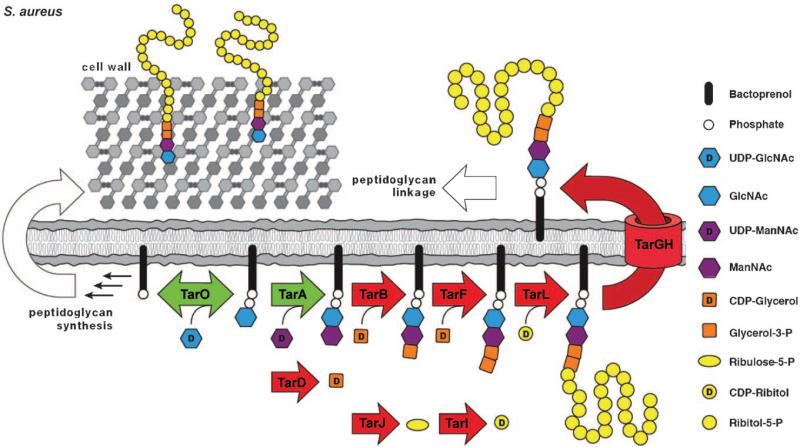Figure 6.
Depiction of the primary Staphylococcus aureus wall teichoic acid (L-WTA) biosynthetic pathway. Nonessential WTA pathway enzymes are colored green and their deletion leads to an avirulent phenotype. Conditionally essential enzymes are colored red and their deletion is lethal in a wild-type background but permitted in a ΔtarO or ΔtarA background. Following intracellular assembly, the poly(ribitol phosphate) polymer is transported to the outside by a two-component ABC transporter, TarGH, and then covalently linked through a phosphodiester bond to the MurNAc sugars of peptidoglycan by an unidentified enzyme the biological and genetic properties of which have not been established. In addition to TarI, J, and L, all S. aureus strains contain a homologous set of enzymes (designated TarI′,J′ and K; Figure 3) that directs the synthesis of a distinct WTA polymer (K-WTA); their cellular functions remain incompletely understood.

